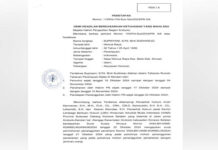Diabetes is a chronic medical condition that occurs when the body is unable to properly regulate blood sugar (glucose) levels. Glucose is a crucial source of energy for cells, and its levels need to be tightly controlled in the bloodstream. This regulation is primarily managed by the hormone insulin, which is produced by the pancreas.
There are two main types of diabetes:
- Type 1 Diabetes:
- Cause: It is typically caused by an autoimmune reaction where the body’s immune system mistakenly attacks and destroys insulin-producing beta cells in the pancreas.
- Onset: It often develops in children and young adults, and its onset is usually abrupt.
- Type 2 Diabetes:
- Cause: It results from a combination of genetic factors and lifestyle factors, such as poor diet, lack of physical activity, and obesity. In type 2 diabetes, the body may produce insulin, but it is either not enough or the body’s cells become resistant to its effects.
- Onset: It is more common in adults, but it can also affect children and adolescents.
Common Symptoms of Diabetes:
- Frequent Urination: Excess glucose in the bloodstream is filtered by the kidneys and excreted in urine, leading to increased urination.
- Increased Thirst: The body tries to compensate for fluid loss through increased urination by causing increased thirst.
- Unexplained Weight Loss: In type 1 diabetes, the body may break down muscle and fat for energy if it cannot use glucose properly.
- Fatigue: The lack of energy due to the body’s inability to use glucose effectively can lead to fatigue.
- Blurred Vision: High levels of glucose can affect the lenses of the eyes, leading to blurred vision.
Complications of Diabetes:
- Cardiovascular Problems: Diabetes increases the risk of heart disease and stroke.
- Kidney Damage: Over time, high blood sugar levels can damage the kidneys.
- Eye Problems: Diabetes can lead to conditions such as diabetic retinopathy, which can cause vision loss.
- Nerve Damage: Peripheral neuropathy can result from diabetes, causing pain or numbness in the extremities.
- Foot Problems: Diabetes can lead to poor circulation and nerve damage in the feet, increasing the risk of infections and ulcers.
Management and Treatment:
- Medication: Insulin and other medications may be prescribed to help manage blood sugar levels.
- Lifestyle Changes: A healthy diet, regular physical activity, and maintaining a healthy weight are crucial for managing diabetes.
- Monitoring: Regular monitoring of blood sugar levels is essential to ensure they are within the target range.
- Education and Support: Diabetes management often involves education about the condition and ongoing support from healthcare professionals.
It’s important for individuals with diabetes to work closely with their healthcare team to develop a personalized management plan tailored to their needs and lifestyle. Regular check-ups, monitoring, and proactive management can help prevent or minimize complications associated with diabetes.
Types of Diabetes
There are several types of diabetes, each with distinct causes, characteristics, and treatment approaches. The main types include:
- Type 1 Diabetes:
- Cause: Type 1 diabetes is an autoimmune condition where the immune system mistakenly attacks and destroys insulin-producing beta cells in the pancreas. The exact cause is not fully understood, but a combination of genetic and environmental factors is believed to contribute.
- Onset: It often develops in childhood or adolescence but can occur at any age.
- Type 2 Diabetes:
- Cause: Type 2 diabetes results from a combination of genetic factors and lifestyle factors, such as poor diet, lack of physical activity, and obesity. In this type, the body may produce insulin, but it is either not enough, or the body’s cells become resistant to its effects.
- Onset: It is more common in adults, but it can also affect children and adolescents, especially with the increasing prevalence of obesity in these age groups.
- Gestational Diabetes:
- Cause: Gestational diabetes occurs during pregnancy when the body cannot produce enough insulin to meet the increased needs, leading to elevated blood sugar levels.
- Onset: It develops during pregnancy and usually resolves after childbirth. However, women who experience gestational diabetes have an increased risk of developing type 2 diabetes later in life.
- Monogenic Diabetes:
- Cause: This type of diabetes is caused by a mutation in a single gene, affecting insulin production and secretion. It is relatively rare and often diagnosed in childhood or adolescence.
- Onset: It can occur at any age, depending on the specific genetic mutation.
- Secondary Diabetes:
- Cause: Secondary diabetes is a result of another medical condition or factor that affects insulin production or utilization. Examples include diseases of the pancreas, certain medications, hormonal disorders, or severe illness.
- Onset: It can develop at any age, depending on the underlying cause.
- Prediabetes:
- Condition: Prediabetes is not a type of diabetes per se, but it is a precursor to type 2 diabetes. It is characterized by elevated blood sugar levels that are not yet in the diabetic range.
- Risk: Individuals with prediabetes are at an increased risk of developing type 2 diabetes, but lifestyle changes can often prevent or delay its onset.
Understanding the specific type of diabetes is crucial for developing an effective management plan. Treatment may involve lifestyle changes, medications, insulin therapy, or a combination, depending on the type and individual circumstances. Regular monitoring and ongoing healthcare support are essential for effectively managing diabetes and preventing complications.
Symptoms of Diabetes
The symptoms of diabetes can vary depending on the type of diabetes and the individual. Here are common symptoms associated with diabetes:
Common Symptoms of Diabetes:
- Frequent Urination (Polyuria): Excess glucose in the bloodstream is filtered by the kidneys and excreted in the urine. This leads to increased urination as the body attempts to get rid of the excess sugar.
- Increased Thirst (Polydipsia): Due to frequent urination, the body loses more fluids, leading to increased thirst as it tries to compensate for the fluid loss.
- Unexplained Weight Loss: In type 1 diabetes, the body may break down muscle and fat for energy since it cannot use glucose properly. This can result in unintended weight loss.
- Fatigue: The lack of energy due to the body’s inability to use glucose effectively can lead to persistent fatigue.
- Blurred Vision: High levels of glucose in the blood can affect the lenses of the eyes, causing vision problems such as blurred vision.
- Slow Healing of Wounds: Diabetes can affect the body’s ability to heal, leading to slow healing of wounds and an increased risk of infections.
- Increased Hunger (Polyphagia): Despite eating, individuals with diabetes may experience increased hunger. This can be a result of the body’s inability to properly use glucose for energy.
- Tingling or Numbness in Hands and Feet: Elevated blood sugar levels over time can lead to nerve damage, resulting in symptoms such as tingling or numbness, particularly in the extremities.
- Recurrent Infections: Diabetes can weaken the immune system, making individuals more susceptible to infections, particularly skin, urinary tract, and genital infections.
- Irritability: Fluctuations in blood sugar levels can impact mood, leading to irritability or mood swings.
It’s important to note that some individuals with type 2 diabetes may not experience noticeable symptoms initially, and the condition may be diagnosed during routine medical check-ups. Additionally, symptoms can be more severe in cases of undiagnosed or poorly managed diabetes.
If you experience any of these symptoms, especially if they are persistent or severe, it is important to consult with a healthcare professional for proper evaluation and diagnosis. Early detection and management of diabetes are crucial for preventing complications and promoting overall health.
Risk Factors for Diabetes
Several risk factors can increase the likelihood of developing diabetes. Understanding these factors can help individuals assess their risk and take preventive measures. The main risk factors for diabetes include:
- Family History: A family history of diabetes, especially in first-degree relatives (parents or siblings), increases the risk of developing the condition.
- Age: The risk of type 2 diabetes increases with age. While it can occur at any age, the risk rises significantly after the age of 45.
- Ethnicity: Certain ethnic groups, including African Americans, Hispanic/Latino Americans, Native Americans, Asian Americans, and Pacific Islanders, are at a higher risk of developing diabetes.
- Obesity: Excess body weight, especially abdominal obesity, is a significant risk factor for type 2 diabetes. Obesity can cause insulin resistance, where the body’s cells do not respond effectively to insulin.
- Physical Inactivity: Lack of regular physical activity is associated with an increased risk of type 2 diabetes. Exercise helps the body use insulin more efficiently and maintain a healthy weight.
- Unhealthy Diet: A diet high in processed foods, sugary beverages, and unhealthy fats can contribute to weight gain and increase the risk of type 2 diabetes.
- Gestational Diabetes: Women who have had gestational diabetes during pregnancy are at an increased risk of developing type 2 diabetes later in life.
- Polycystic Ovary Syndrome (PCOS): Women with PCOS, a hormonal disorder, are at an increased risk of insulin resistance and type 2 diabetes.
- Hypertension (High Blood Pressure): High blood pressure is often associated with insulin resistance and is a risk factor for type 2 diabetes.
- Abnormal Cholesterol and Lipid Levels: High levels of triglycerides and low levels of HDL cholesterol can increase the risk of diabetes.
- Sleep Apnea: Sleep apnea, a condition characterized by interrupted breathing during sleep, has been linked to an increased risk of insulin resistance and type 2 diabetes.
- Smoking: Smoking is associated with an increased risk of type 2 diabetes, and individuals with diabetes who smoke are at a higher risk of complications.
It’s important to note that having one or more risk factors does not guarantee the development of diabetes. Many risk factors are modifiable through lifestyle changes, such as maintaining a healthy weight, engaging in regular physical activity, and adopting a balanced diet. Regular health check-ups, monitoring blood sugar levels, and seeking guidance from healthcare professionals are essential for managing and mitigating diabetes risk.





























